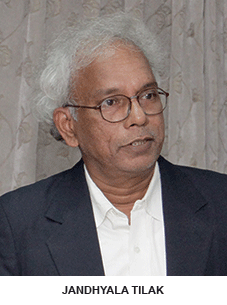 Public universities in India are in a shambles. Public apathy towards higher education and public universities in particular, is the prime cause of their dismal condition. This apathy is reflected in many ways, notably in the decline of relative priority accorded to higher education in terms of public expenditure as a proportion of total government expenditure and GDP; stagnation in recruitment of qualified faculty; poor regulation; declining social status of the teaching profession, and above all in the conspicuous absence of clear long-term policies for higher education development.
Public universities in India are in a shambles. Public apathy towards higher education and public universities in particular, is the prime cause of their dismal condition. This apathy is reflected in many ways, notably in the decline of relative priority accorded to higher education in terms of public expenditure as a proportion of total government expenditure and GDP; stagnation in recruitment of qualified faculty; poor regulation; declining social status of the teaching profession, and above all in the conspicuous absence of clear long-term policies for higher education development.
Quite clearly, there’s an urgent national imperative to rejuvenate our universities. I offer some propositions for consideration and debate.
First, it’s important to acknowledge that public higher education institutions are necessary to build equitable, just and humane societies. Sustainable long-term economic growth of every nation critically depends upon the quality and number of graduates produced by its higher education system. Moreover, by providing equitable access to students of every socio-economic strata, public universities play a major role in reducing social and economic inequalities. Visionaries, critical thinkers and reformers produced by universities constitute the backbone of vibrant and stable democratic societies.
The classic model is still the best for developing universities. The University of Nalanda, or the Nalanda Mahavira as it was known at the time, established in 4th century BCE was one of the world’s first great universities. According to available records, its extensive dormitories accommodated over 10,000 students and 2,000 teachers in its heyday. Transcending ethnic and national boundaries, Nalanda attracted pupils and scholars from Java, Korea, Japan, China, Tibet, Indonesia, Turkey and other parts of the world.
Such large universities, besides yielding economies of scale, provide rich and vibrant environments for creation and dissemination of knowledge. Unfortunately in terms of enrolments, Indian universities average a mere 500, less than the size of a reputed secondary school. This suggests the need for consolidation and merger of many of the 800 universities across the country which are economically, managerially and intellectualy ‘unviable’.
Third, universities should necessarily be ‘universal’ in character, scope and jurisdiction, with students and faculty drawn from a rich diversity of socio-economic, cultural and ideological milieus within and outside the country. This will promote better understanding of and respect for heterogeneous cultures, ability to ‘learn to live’ together and will contribute greatly to national integration, social harmony and global citizenship. Certainly, universities should never be established to serve local needs and turn into parochial institutions.
Fourth, it’s well-known the traditional role of universities is to produce and disseminate knowledge through research, teaching and broader social outreach programmes. This means universities must nurture competent researchers, inspiring teachers and socially responsible citizens. It requires them to develop high quality teaching and research programmes, and provide opportunities for holistic development of students. After all, societies depend not just on scientists, engineers, managers, and technocrats, but also need visionaries, critical thinkers and citizens with universal human values. Prolonged neglect of the humanities, liberal arts and social sciences in Indian universities during the past quarter century is a major cause of the general malaise which has debilitated Indian society.
Fifth, there’s an urgent need to launch an ‘operation blackboard’-style infrastructure development programme for higher education. They urgently need new departments of study offering a variety of teaching programmes and research studies.
Currently, infrastructure facilities in the great majority of public universities are in appalling condition with facilities for research almost non-existent in many state universities and acute shortages of faculty in all, including Central universities.
Universities are expensive institutions, but their social returns outweigh investment several fold because higher education is a public good, producing socially beneficial outcomes over long periods, even generations.
Sixth, I believe open universities dispensing online education are insufficient alternatives to bricks-n-mortar formal institutions. Distance education programmes may be good for skill inculcation and teaching employment-related skills. But they are inadequate for knowledge creation, an essential function of universities, and no substitutes for formal public universities over the long term.
Let me conclude by emphasising that a coherent long-term higher education strategy and plan of action is necessary to reform and rejuvenate our public universities. It is also important to initiate serious action at the earliest to impact their critical importance upon the state, politicians, bureaucracy, students, parents and society. If not, there’s a clear and grave danger that India’s public university system may totally collapse.
(Prof. Jandhyala B.G. Tilak is vice chancellor of the National University of Educational Planning and Administration (NUEPA), Delhi)